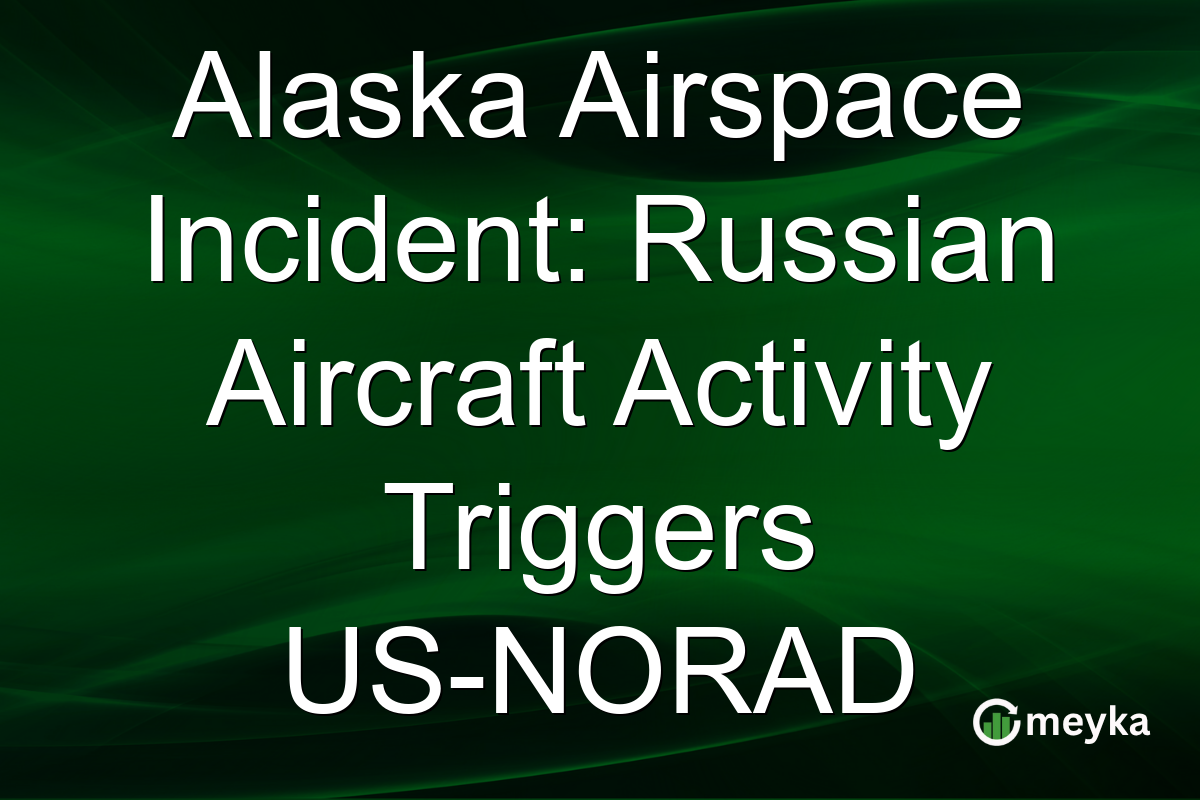Alaska Airspace Incident: Russian Aircraft Activity Triggers US-NORAD
In the past 24 hours, a notable increase in Russian aircraft activity near Alaska has led to multiple intercepts by US and NORAD forces. This incident reflects rising tensions between the US and Russia, with airspace security becoming a focal point of global concern. The recent events underscore the geopolitical complexities and the strategic importance of the region.
Escalating Airspace Activity
Russia’s military maneuvers in the Alaskan airspace have intensified, with multiple sorties reported. In recent days, NORAD, the North American Aerospace Defense Command, has intercepted numerous Russian military planes near Alaska. This surge highlights the growing military posture of Russia in the region and signals a potential shift in geopolitical strategies. Reports from Reuters suggest that these flights are part of routine patrols, yet their proximity to US borders has prompted a heightened alert status. Both nations seem to be testing each other’s defenses, amplifying fears of unintended escalations.
US and NORAD’s Coordinated Response
The US responded promptly with a coordinated interception by NORAD forces. According to CNBC, American fighter jets were scrambled to shadow the Russian aircraft as they entered the Air Defense Identification Zone (ADIZ) of Alaska. This defensive posture demonstrates the US’s commitment to protect its airspace while avoiding direct confrontation. Such interceptions underscore the capability and readiness of NORAD operations, ensuring the region remains secure from potential incursions. The strategic focus remains on deterrence, signaling the US’s unwillingness to tolerate aggressive maneuvers.
Implications for US-Russia Relations
These incidents reflect broader tensions between the US and Russia. The consistent presence of Russian military planes near Alaska indicates a deliberate strategy to test US responses and to project power. As noted by Bloomberg, such actions exacerbate already strained relations between the two nations. For investors, understanding these dynamics is crucial. Geopolitical events can affect markets, particularly in defense and aerospace sectors. Monitoring the situation helps anticipate potential economic impacts and enables informed decision-making.
Final Thoughts
The recent spike in Russian aircraft activity near Alaska underscores the persistent tensions between Russia and the United States. As both nations navigate this complex landscape, the focus remains on maintaining stability and avoiding direct conflict. For the global community, these events serve as a reminder of the importance of strategic diplomacy. Investors and analysts should closely observe developments, as geopolitical tensions can influence market movements, particularly in sectors tied to defense and security. Staying updated with real-time insights, as provided by platforms like Meyka, will be vital in making informed investment choices. Ultimately, while tensions may rise and fall, the need for vigilant monitoring and strategic preparedness remains constant. Our interconnected world demands a nuanced understanding of such incidents and their possible ripple effects.
FAQs
The response was triggered by an increase in Russian aircraft activity near Alaska, prompting multiple interceptions by US and NORAD forces. This activity highlights ongoing military tensions and concerns over airspace security.
The incident exacerbates tensions between the two countries, as it reflects a strategic effort by Russia to test US defenses. Such actions can strain diplomatic ties and impact broader geopolitical dynamics.
Alaska’s strategic location makes it a key monitoring point for potential threats from across the Pacific. Control and surveillance of this airspace are vital for national security, influencing military readiness and international relations.
Disclaimer:
This is for information only, not financial advice. Always do your research.






